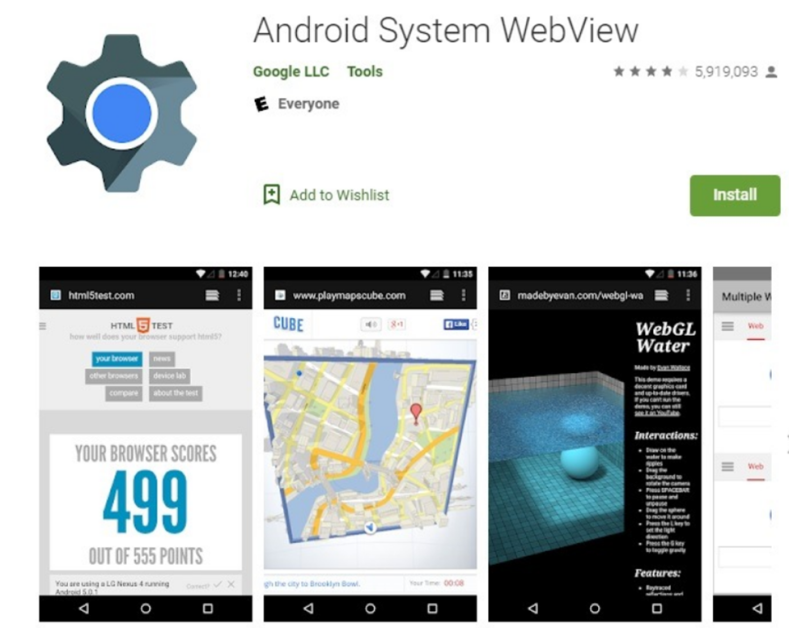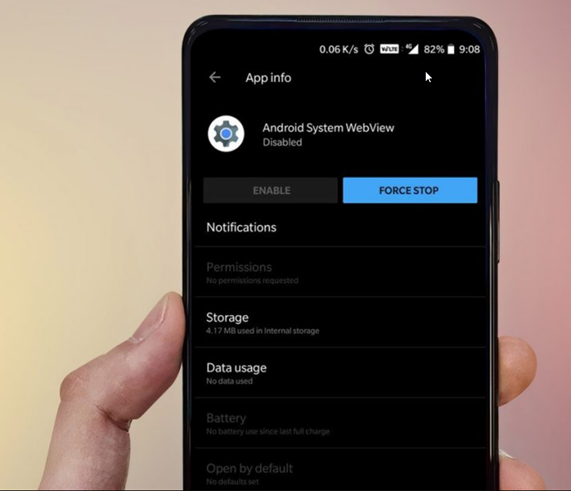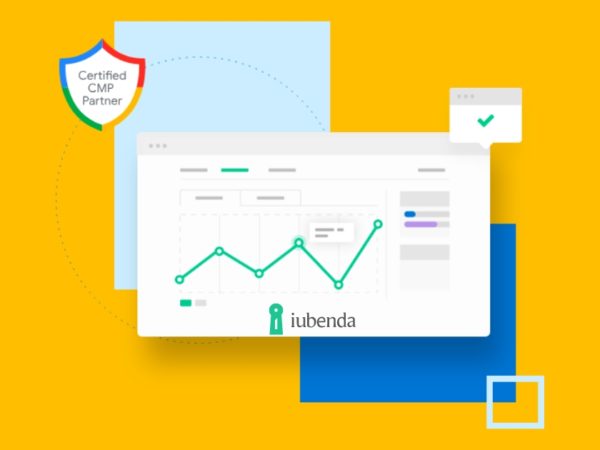Geekflare is supported by our audience. We may earn affiliate commissions from buying links on this site.
Almost every Android smartphone has a web browser installed. It isn’t always the best tool for accessing online pages or web-based apps. Instead of opening sites or apps, Android uses Android System WebView (ASW) to display web information in all apps.
What is Android System WebView?
Android WebView is a Chrome-powered system component that enables Android applications to access web pages. This component is pre-installed on your device and should be maintained up to date. Make sure to get the most recent security updates and bug fixes.
It is a significant feature of Android to increase speed and security. Any third-party app can use Android WebView to combine applications’ calls efficiently.
Google has improved Android’s connection with ASW over time. Before Android 5 (Lollipop), WebView would only be upgraded when a smartphone’s company wanted to update it by sending an OTA update to the specific model. It has changed with Android 5, allowing users to update it directly from the Google Play Store.

Moreover, this helps to fix bugs quickly. Custom WebView is based on the Google Chrome feature released with Android 7. Later on, it became the default choice for every Android smartphone. It can be changed in Android 10 and above, where WebView is an independent component, sharing code with Chrome.
Do you need an Android System WebView?
If you’re a daily Android user, you’ve probably figured out that the OS makes this decision for you. It is very important to leave WebView on if your smartphone is running on Android 6.0 (Marshmallow) or below for best performance. If you have an Android 7.0 (Nougat) or above smartphone, you should disable it since Chrome handles all of WebView’s tasks instead.
Android System WebView is a crucial component of projects for Android 7.0 developers. It prefers to offer its apps the ability to access and interact with online content inside the applications themselves. First, the WebView library will be activated, and a WebView class instance is generated. The Android Declaration file consists of the code and web permissions. This enables the launch of web pages from inside applications.
These steps will help the browser to enable the rendering of web pages and JS code. It is important to note that manually installing WebView (if your device does not come with it by default) is only recommended if you have a smartphone introduced in 2015 or later, running Android 5.0 or above. Otherwise, you risk becoming a target of hackers who target the minor loopholes in code to obtain access to your device’s memory.
Check whether Android System WebView is Installed or not.
Each WebView version includes new improvements, so you’ll be able to observe which version you have loaded by looking at the settings on your Android smartphone.
- Open the Settings on your device’s app launcher. Tap the Apps option from there.
- You will be able to see a list of installed apps and System apps pre-loaded. Search for Android System WebView in the search box, then select the item if you find it.
- Scroll to the bottom of the App Info screen. This will show the Android System WebView version number at the bottom. Example – Version 101.0.4951.34 beta. These version IDs are the same as those for Google Chrome for Android, indicating that they share a code basis.
- You’ll need to look up your Android WebView version number to see whether it’s the most recent version. If it isn’t, you have to update it.
How to update Android System WebView?
Keeping Android System WebView up to date is a must task for the latest Android devices. Suppose you have an outdated Android smartphone (4.4 KitKat or earlier). You won’t be able to upgrade WebView since it is a lot more integrated system component that Android System WebView can’t get any update without a large device OTA update.

However, you may upgrade to Android System WebView through the Google Play Store for all future updates.
- To do so, use the Play Store app and look for Android System WebView. If an update is available for the app, click the Update button.
- If your WebView has been updated, your Android will utilize the new version for any other apps that use it to access and will see the web content.
Installing Multiple WebView Release Versions for the Android System
A single Android System WebView release keeps everything on the same track, at least in terms of significant upgrades. Google, thankfully, is providing additional options for Android users with smartphones running Android 10 and newer. This version of Android features a version of WebView that shares a lot of code with the Google Chrome app. Rather than providing this as a single option, Google provides four separate WebView release versions that you can install.
These are some examples:
- WebView Stable: In this version, new updates come regularly and follow the test schedule to maintain stability across various devices. This is the version that comes equipped with all Android smartphones.
- WebView Beta: A beta version that shares most of the code and functionality of WebView stable. Because of the limited testing, this version may have many bugs.
- WebView Dev: This development version is open to provide significant changes. This edition gets its update every week so that users may face some problems and glitches. Still, you will also be able to try and test new features or fixes ahead of other users.
- WebView Canary: The most recent, cutting-edge version with no testing. This is a daily release, including the most recent code from the previous day. Use this version with carefulness and at your own risk only!
How to switch from one version to another?
After installing one of these WebView versions, you may choose it from the Android developer settings menu. Usually, this option is hidden. You have to go to your Android settings and find it. Tap About Phone > Software Information. Then multiple times, double-tap the Build number information.
This will enable developer mode on your device. Return to your Android settings and choose WebView implementation. A list of available WebView releases will appear here. Touch the option you wish to use to switch to it.
For Android 7 to Android 9 devices, you can install Google Chrome release tracks (Stable, Beta, Dev, and Canary) to get the same effect. The WebView is incorporated within the Google Chrome app for these editions.
How to turn off or remove the Android System WebView?
Ideally, you shouldn’t deactivate or uninstall Android System WebView. Android System WebView is a necessary system component for opening web content in Android applications. The deactivating option will most probably be disabled. The best thing you can do is keep WebView enabled and update it from the Google Play Store. If you’re experiencing difficulties loading online content on your Android smartphone, consider upgrading to a newer version of WebView by following the instructions mentioned above.

A beta release of ASW could resolve an issue in a stable version of WebView in a newer beta release. Of course, these updates should make their way into the WebView stable performance in a short amount of time, so in most cases, it may be wise to wait. It is not possible to uninstall Android System WebView, but yes, you can disable it by following the below steps to make your smartphone faster and battery efficient:
- Open Google Play Store Application
- Search for Android System WebView
- Click on the first app, which is Android System WebView
- For most of the devices, you can see a Disable button
- Click it
- You can check whether it is disabled or not by going to settings, then apps, and then to Android System WebView.

Maintaining Android Updates
Android devices aren’t renowned for staying up to date compared to iOS. Still, by retaining Android System WebView as a unique System component, Google can easily send out important issue updates through the Google Play Store. This is installed on practically all Android devices, including your PC’s emulated Android devices.
This is just another standard smartphone security method employed by developers like Google and Android to keep devices safe from the most dangerous attacks. If you’re very much concerned about security, you may consider downloading Android antivirus software. However, this may not be required for most users.
Conclusion
Without the Android System WebView, accessing external links inside an app would need switching to a separate web browser app (Chrome, Firefox, Opera, etc.). Check if your mobile device has outdated versions of the System and apps such as Android System WebView. They must be updated regularly so that there is no chance of hackers attacking your Android device.



